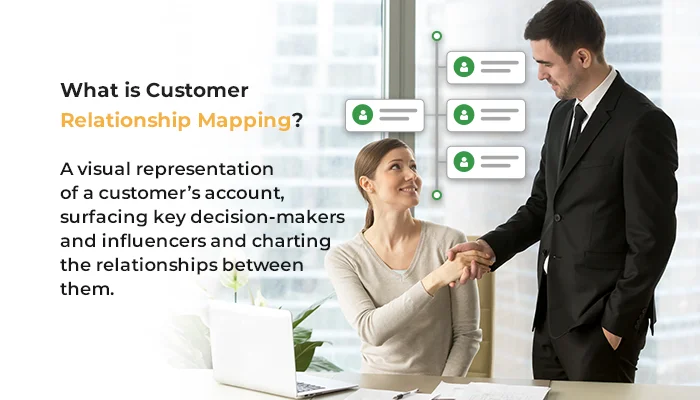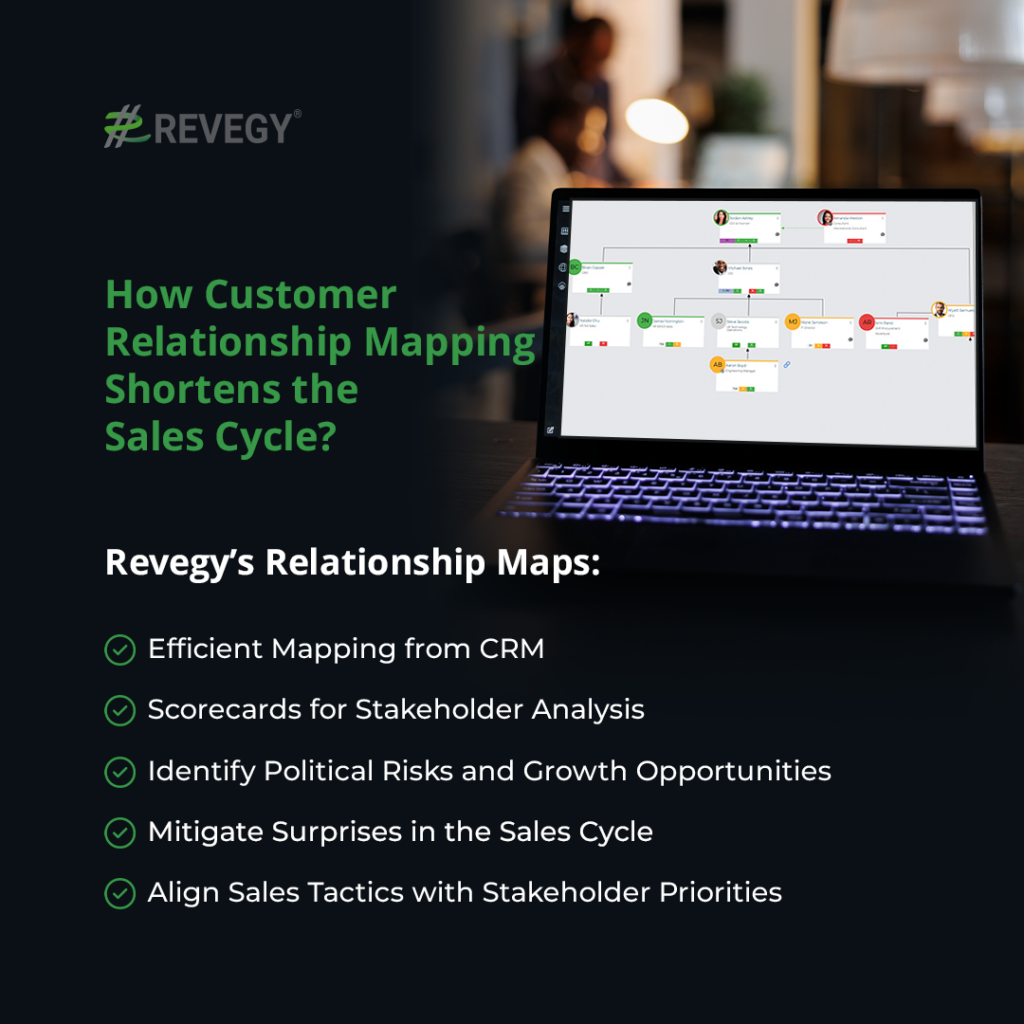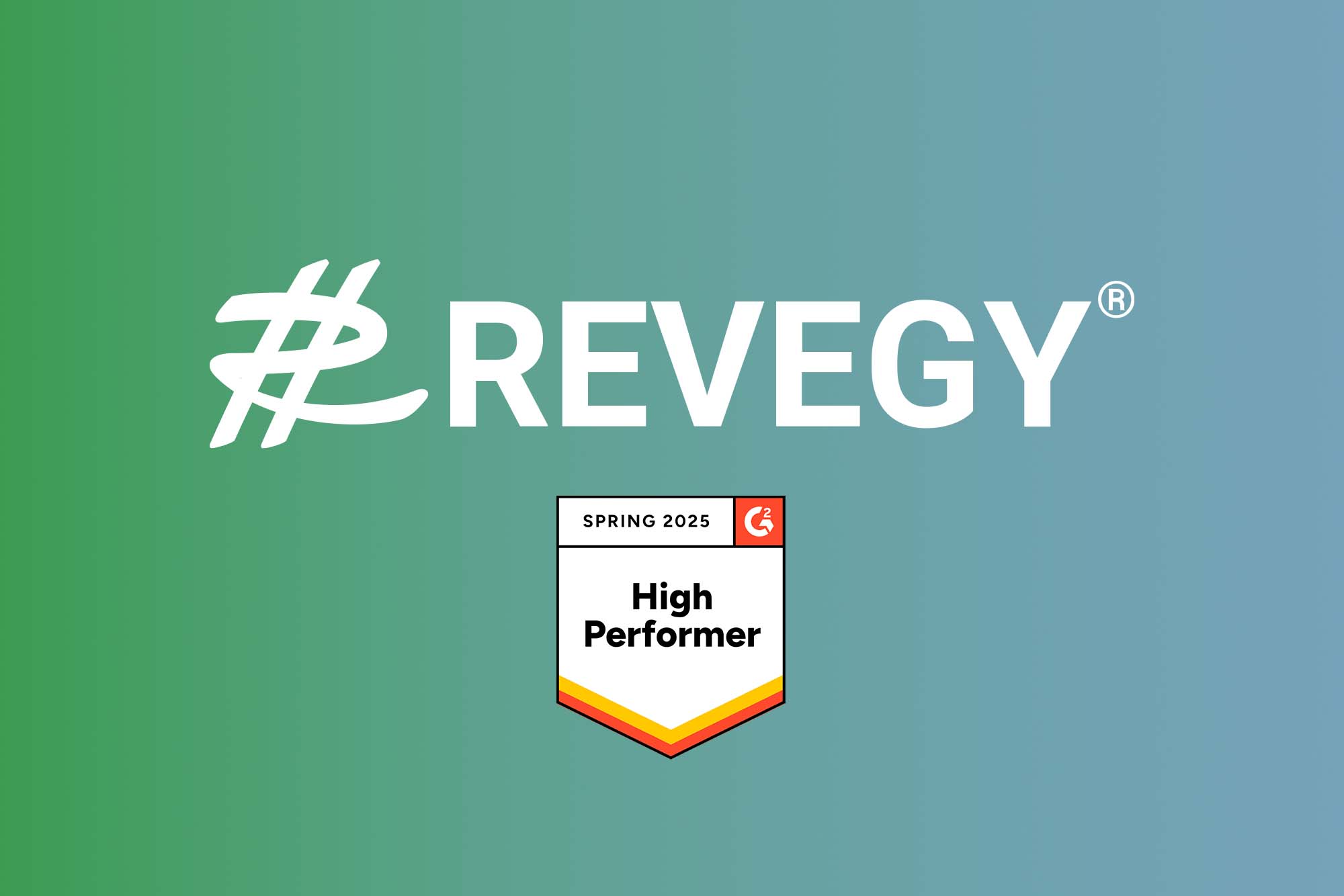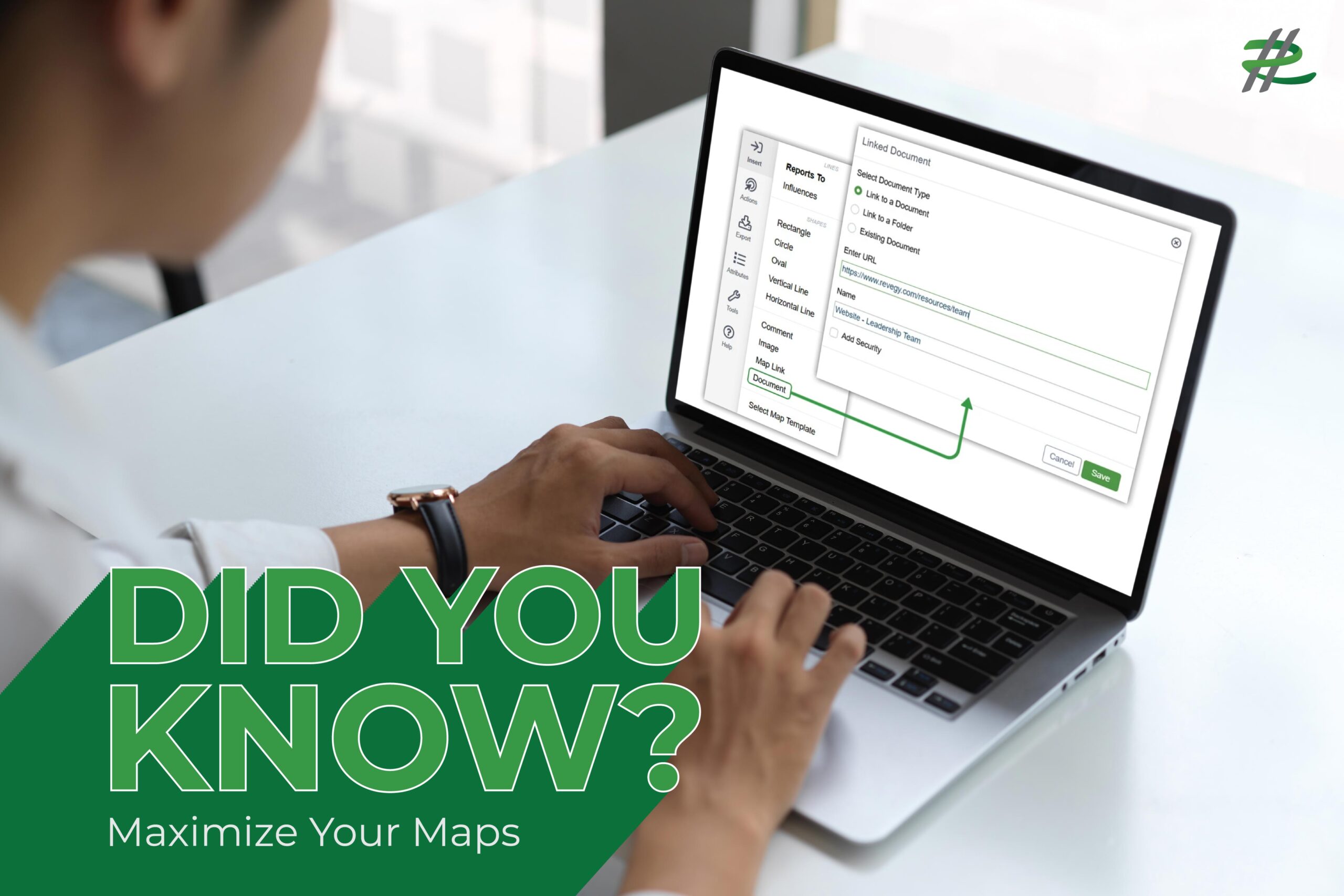Many B2B companies sell into the enterprise market, which often means deals are large, complex, and long-cycle. These deals have come to be known as “megadeals.” They involve a higher-than-average number of stakeholders and decision-makers, many of whom have conflicting goals and needs.
In a recent McKinsey article, Landing the Megadeal – Seven Keys to Closing Big Sales that Make Money, sales experts David Levitch, Aditya Pande, and Brian Selby described closing megadeals as “the holy grail of many sales organizations” because they create a revenue model in which 40% of projected revenue can come from just one percent of deals in the pipeline. In other words: losing these megadeals can mean missing revenue targets.
To ensure your sales team can close a megadeal, it is critical to identify, connect, and access the key stakeholders and decision-makers who influence and control the strategic relationships, budget, and purchasing process. Customer relationship mapping is therefore essential to understanding these dynamics.
What is Customer Relationship Mapping?
Customer Relationship Mapping is a powerful tool that provides sales reps with a visual representation of a customer’s account, surfacing key decision-makers and influencers and charting the relationships between them. By using color-coded boxes and symbols, this tool helps businesses understand the network of key stakeholders within a customer’s account and gain insights into their motivations and goals.
Sophisticated relationship maps can show who the sales rep knows, who the decision-maker or influencer knows when the decision-maker or influencer was last contacted by the sales organization, and where there may be opportunities due to company growth. With this knowledge, companies can develop effective sales strategies that demonstrate how products and services achieve the objectives of each stakeholder in the purchasing process to win a favorable decision by the committee.
How Relationship Mapping Tools Add Value to Your Sales Strategy
In a megadeal, sales leaders must fully understand the stakeholders and decision-makers involved on the buyer’s side. Yet research shows only half of sales reps can effectively navigate to the right people involved in the buying cycle.
According to a recent CSO Insights Sales Optimization Survey, the average sales opportunity has 4-5 decision-makers—more for megadeal opportunities. It is critical that sales reps not only identify these decision-makers but, more importantly, earn their buy-in.
Relationship maps are visual maps of a buyer’s key stakeholders that enable sales teams to quickly identify the ‘must-have’ support to close a deal and anticipate where the risks are in an opportunity. McKinsey reinforced the value of relationship mapping software, claiming, “Companies that manage relationships well use deal-relationship mapping tools to understand who matters, as well as what matters to each party: price, quality, service.”
Adding relationship mapping to your sales strategy and account planning can bring several benefits, including improving the effectiveness and efficiency of your sales process. Here are some ways in which relationship mapping can add value:
- Understand the decision-making process: Visual relationship mapping allows sales reps to identify key decision-makers in the buyer organization and understand their roles and responsibilities. This insight can help tailor sales pitches and messaging to resonate with each stakeholder’s priorities and concerns.
- Build trust and credibility: Knowing the key stakeholders in a buyer organization enables sales reps to build relationships with the right people over time and establish trust and credibility. This trust can be leveraged to overcome objections and close deals more effectively.
- Increase the likelihood of success: By mapping the decision-making process and building relationships with key stakeholders, sales reps can increase the likelihood of success by ensuring they engage with the right people and understand their backgrounds, motivations, and biases to address their needs and concerns sufficiently.
- Facilitate cross-selling and upselling: Business relationship mapping can also help sales operations and sales teams identify opportunities for cross-selling and upselling. Understanding the broader organizational landscape allows organizations to identify other departments or business units that may benefit from their products or services.
Once a relationship map is in place, sales reps will better understand their buyer and can fine-tune their sales strategy to ensure sales messages resonate with each of the critical stakeholders in the sales process.
Leveraging a Relationship Mapping Strategy to Drive Strategic Selling
Relationship mapping is crucial to strategic selling, and visual relationship maps, like Revegy’s sales enablement tool, can help sales teams gain a comprehensive understanding of their target buyers. These maps allow sales teams to identify key stakeholders and understand their roles and relationships within the organization. This understanding, in turn, enables them to wield the most effective sales tactics to gain access to decision-makers and influencers and win their support.
Revegy’s Relationship Maps provide sales teams with several key features and benefits:
- Efficient Mapping from CRM: Quickly and easily map contacts directly from your CRM system and visually connect the dots between various stakeholders, coaches, decision-makers, and procurement professionals who play a role in the purchasing process. With drag-and-drop functionality, creating organizational or influence charts becomes simple and effective.
- Scorecards for Stakeholder Analysis: Revegy’s relationship maps include scorecards that help sales teams identify their allies and adversaries and the strength of these relationships. This information allows teams to prioritize their efforts, develop relationships with the right people, and save time and resources on less valuable contacts.
- Identify Political Risks and Growth Opportunities: In addition to identifying allies and adversaries, the maps help sales teams determine which relationships need to be strengthened and which political risks to neutralize. This approach allows sales teams to develop targeted relationship plans that address specific challenges and opportunities.
- Mitigate Surprises in the Sales Cycle: Another vital benefit of Revegy’s Relationship Maps is that they help sales teams avoid unexpected surprises when new players enter a sales cycle. By visualizing the relationships within the organization, sales teams can better prepare for changes in the decision-making process and adjust their tactics accordingly.
- Align Sales Tactics with Stakeholder Priorities: Revegy’s Relationship Maps enable sales teams to align their sales tactics with the priorities, initiatives, and goals that matter most to each stakeholder in the purchasing process. By understanding each stakeholder’s unique needs and concerns, sales teams can tailor their messaging and approach to build stronger relationships and increase their chances of success.
Leveraging Relationship Mapping to Drive Strategic Selling: Technology Company Case Study
Relationship mapping is crucial to strategic selling, and visual maps like Revegy’s help sales teams understand their target buyers comprehensively. These maps allow sales teams to identify key stakeholders, understand their roles, and develop effective engagement strategies to shorten sales cycles and increase deal success rates.
The Customer
Our customer, a leading technology company, designs and delivers digital solutions for enterprise clients. With a growing complexity of solutions and services, the organization needed a better way to navigate their sales strategy.
The Challenge
Using a home-grown account planning system, the company’s sales team struggled with manual processes and lacked flexibility in managing complex accounts. As they expanded relationships and added buying centers, they faced challenges in upselling, cross-selling, and maintaining internal alignment.
“Account planning needs to be an executable strategy and not just a ‘capturing’ exercise for our sales team.” – Head of Sales Operations Enablement and Digital Transformation at a leading technology company.
Defining Their Goals:
To tackle these challenges, the company aimed to:
- Move account planning to a digital platform for real-time visibility.
- Implement an action-based plan for execution support.
- Empower sales reps as “Captains of the Account Team” to foster collaboration.
Partnership to Implement a New Strategy
Our customer required a platform that could integrate with Salesforce, support customizable playbooks, and offer a user-friendly interface. Revegy’s solution met these needs, enabling the company to create strategic account maps, set objectives as tasks, and gain visibility into stakeholder relationships.
The Results
“Revegy gave us a clear line of sight into sales strategy execution. Because of this, our company was able to reduce the sales cycle by 43 days. We also achieved a 14% improvement in Sales, Revenue, and Margin.” – Sales Enablement Leader at a leading technology company
Additionally, Revegy’s platform improved internal collaboration, streamlined the account review process, and provided transparency with client documentation.
Key Benefits
- Reduced Sales Cycle Time by 43 Days: Revegy’s relationship mapping and strategic planning tools provided clear visibility into sales execution.
- 14% Improvement in Sales, Revenue, and Margin: Enhanced planning and stakeholder engagement drove business outcomes.
- Improved Client Relations: Strategy Maps helped validate customer strategies and position the customer as a trusted partner.
For companies looking to optimize their sales processes and achieve similar results, relationship mapping can be a game-changer.
Discover the Benefits of Relationship Mapping with Revegy
In today’s competitive sales environment, it is more important than ever for companies to fully understand the decision-makers involved in the buying process. Relationship mapping is a powerful tool that can help sales teams navigate complex deals, build trust with key stakeholders, and ultimately close more sales.
By using visual maps to identify critical stakeholders and understand their roles and relationships, sales teams can improve their effectiveness and efficiency, avoid surprises, and increase their chances of success. If you want to learn more about how relationship mapping can benefit your sales strategy, request a demo with Revegy today. Don’t miss this opportunity to improve your sales performance and increase revenue.
Now On Demand!
“Sales on the Move: Embracing Agility for a Changing Sales Journey.”
Watch our on-demand webinar, where we delve into the key elements of an agile sales approach from start to finish, featuring Luiz Martins, CMO of Revegy, along with esteemed guest speakers Donald C Kelly, Founder and The Sales Evangelist, and Doug Inda, SVP of Enterprise Client Development at Syndigo. Discover how to adapt to tighter budgets without compromising sales performance, leverage technology to streamline processes and close more deals, provide meaningful value to buyers amidst abundant data, succeed in a remote sales environment with effective communication and virtual presentations, and position yourself as a trusted advisor in today’s ever-changing sales landscape. This is your chance to increase your pipeline and propel your success forward. Watch on-demand here!
Frequently Asked Questions (FAQs)
What is relationship mapping in sales?
Relationship mapping in sales is the process of visually charting the connections, roles, and influence of stakeholders within a target account. This helps sales teams understand the decision-making process and identify key players to engage with, ultimately shortening sales cycles.
How can relationship mapping help shorten the sales cycle?
Relationship mapping shortens the sales cycle by providing sales teams with insights into the motivations and concerns of each stakeholder. By focusing on the right individuals and crafting tailored messaging, sales reps can move deals through the pipeline more efficiently.
What tools are used for relationship mapping?
Tools like Revegy’s Relationship Maps help sales teams create visual representations of customer relationships. These tools often integrate with CRM systems to quickly identify and connect the dots between key stakeholders, decision-makers, and influencers.
What’s the difference between relationship mapping and account mapping?
Relationship mapping focuses on understanding the connections between stakeholders and decision-makers within an account, while account mapping provides a broader view of the account structure, including hierarchies, departments, and areas of influence.
Why is relationship mapping important for strategic sales?
Relationship mapping is essential for strategic sales because it enables teams to build deeper connections with key decision-makers, anticipate risks, and align sales tactics with stakeholder priorities. This improves the likelihood of closing complex, high-value deals.
How does relationship mapping impact B2B sales?
In B2B sales, where multiple decision-makers are involved, relationship mapping helps sales teams understand who to target, what their motivations are, and how to influence them effectively. This targeted approach leads to more successful engagements and shorter sales cycles.
What are some best practices for relationship mapping?
Best practices for relationship mapping include keeping the maps updated regularly, using consistent color codes and symbols, integrating with CRM data, and leveraging insights to personalize sales strategies for each stakeholder.
Can relationship mapping be used for upselling and cross-selling?
Yes, relationship mapping helps identify connections within an organization that may lead to cross-selling and upselling opportunities. By understanding the organizational structure, sales teams can target additional departments or business units.
How do I get started with relationship mapping?
Start by gathering data on your account’s key stakeholders, mapping their connections and roles, and using tools like Revegy’s Relationship Maps to visualize and track these relationships. Regularly update the map as your engagement with the account evolves.
How does Revegy’s Relationship Mapping software help sales teams?
Revegy’s Relationship Mapping software enables sales teams to visualize and navigate complex relationships, identify allies and adversaries, and prioritize engagement strategies to increase deal success rates and shorten sales cycles.









